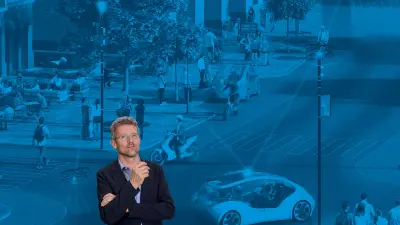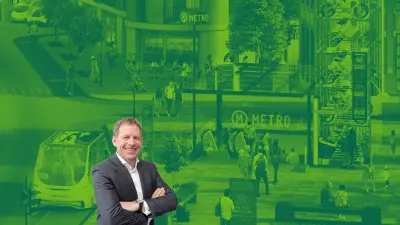Impact of self-driving cars on society
A talk with the Professor in Urban Planning at Aalborg University in Denmark
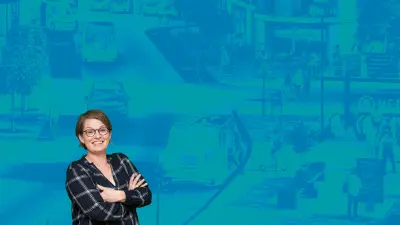
The use of vehicles will change fundamentally in the future as a result of automated driving. What this means for the quality of life in urban areas and why new mobility concepts require a mind shift is explained by the researcher Malene Freudendal-Pedersen.
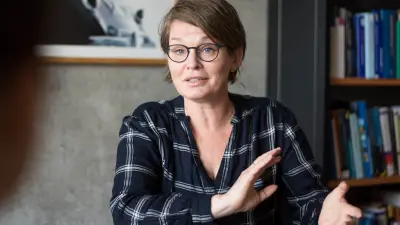
What attracts people to cities? It is obviously the cultural diversity, the range of jobs and entertainment facilities such as bars and clubs. “Above all, they are places where people can meet and where there is space for outdoor activities,” says Malene Freudendal-Pedersen, Professor in Urban Planning at Aalborg University in Denmark. It is also where she sees a dilemma for urbanity — the most liveable places are those where few or even no cars at all are on the roads. However, many towns and cities are construed for cars as the main means of transport. People should be able to reach every destination in their vehicle with ease — the streets and parking spaces plunder the areas for green oases.
“We, as a society, have to get used to sharing things.”
Expensive private ownership for short trips
In Freudendal-Pedersen’s opinion, the biggest challenge for modern urban planning therefore lies in balancing two basic needs: On the one hand, offering lots of space for parks and green areas and on the other guaranteeing seamless mobility where the last mile is the biggest problem: “Public transport is often not used because it doesn’t lead directly to the desired destination. This explains why still many inner city trips made with the car are shorter than five kilometers,” explains the professor.
How can this challenge be mastered in the future? Freudendal-Pedersen sees a big chance in car sharing concepts: People will no longer own cars and will instead share them with others on a need basis. Cars will thus become a building block in the mobility mix — a supplement to public means of transportation or bicycles for instance. It will have a major impact on urban life and require a societal mind shift:
“A car that no longer belongs someone exclusively — an idea that many will have to get used to.” For many people, cars are still seen as status symbols. Malene Freudendal-Pedersen has however already noticed a change within society: The feeling of freedom and self-fulfillment no longer depends on the ownership of one’s own car to the same degree as it did a couple of years ago.

Shared mobility services — not only online is shared
The urban researcher is already seeing a change in people’s awareness: “The succeeding generation shares far more. It starts with social media where images and thoughts are shared with other often unknown persons. This attitude is also reflected offline, in the area of transportation. “Young people are far more aware of bike or car sharing services than older people,” says Freudendal-Pedersen. This is also backed up by diverse studies: According to a study conducted as a part of the International Conference on Intelligent Transportation Systems, the majority of car sharers in the German cities of Munich and Berlin are between 25 and 34 years of age.
The big potential of autonomous vehicles
Self-driving vehicles will also play a central role in the future to advance ride-sharing concepts. The future vision looks like this: One books an autonomous shuttle, it moves through the traffic without a human driver, one boards and is driven to the desired destination. Above all, one benefit is that one does not have to worry about parking the fully autonomous vehicle, as optimal capacity utilization — with as little standstill as possible — means the driverless car can do it for itself. A more efficient disposition significantly reduces the need for parking spaces — urban areas that can then be used in a variety of other ways.
The personal relationship to a vehicle and its function as a status symbol is certain to change with the advent of autonomous shuttles. Malene Freudendal-Pedersen however believes some basic habits will remain the same with self-driving cars: “Parents for whom it is important to accompany their children on their way to kindergarten, will not seat them in a self-driving car on their own,” she says. “Despite advancing automation, we will still remain people with all the emotional needs.”

Autonomous driving enables new automobile concept
“It’s important that we as a society grow into the new mobility,” believes Freudendal-Pedersen. People have to learn how to benefit from the new opportunities offered by technology. If the concept of autonomous cars is introduced into public life too quickly, people could easily be overwhelmed. However, it is inconceivable that cars will be self-driving from one day to the next — in the opinion of many experts, a lot of technological and legal work is still necessary. Malene Freudendal-Pedersen is certain that the search for the right solution will pay off: “The chances of rethinking and improving the concept ‘car’ will increase as a result of automated driving.”
Profile
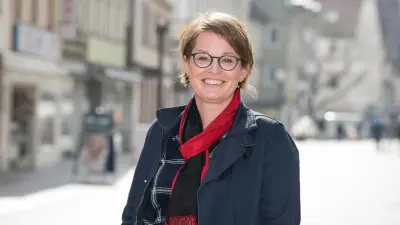
Malene Freudendal-Pedersen
Professor in Urban Planning at Aalborg University in Denmark
Malene Freudendal-Pedersen graduated from Roskilde University in Denmark with a degree in Environment, Society and Technology. She also earned her doctorate in Social Science there. After working outside the university for a few years in the Danish Architecture Center, she returned to Roskilde University as an assistant and later Associate Professor in Sustainable Mobilities. Since the start of 2019, she has been Professor in Urban Planning at Aalborg University.
